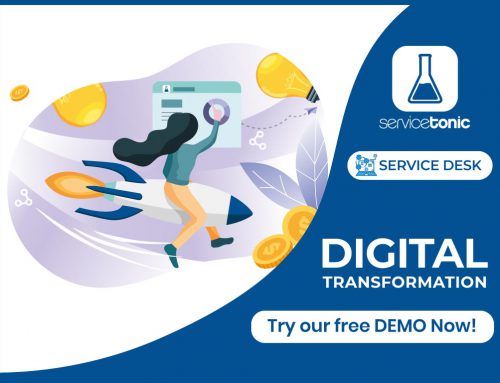Table of Contents
Solving incidents is like a trip…
A journey has a beginning, an ending… and a learning.
Can you recall any trip? You may have prepared luggage, planned routes and schedules, managed a limited budget… Probably, you used a camera to record your experience and share anecdotes with your people… Tickets, take a similar trip.
The trip of a ticket helps solve incidents and the most important, as many poets have written, is the journey: the recording of incidents in the Service Desk.
Next Stop: an incident
Let us see how to approach incident management in a Service Desk that applies ITIL good practices, as is the case of ServiceTonic:
Everything starts with the detection of the incident, which is communicated through any channel. The Service Desk operator registers it in the ticket with a unique identifier and provides the necessary information to manage the incident (category of incident, urgency, impact, priority, date and time…).
It is essential to categorize and prioritize incidents in the tickets, since it is the way to identify what level of the company can solve it and in what time frame. This information lets us manage incidents according to the expectations and conditions agreed with customers; in previous posts we have deepened this topic with the Service Level Agreements.
Once the ticket is opened, an initial diagnosis is carried out. The Service Desk operator may give a response to the user. Otherwise, they will escalate the ticket to the support person who can do so or the person with that responsibility. Whenever the problem is resolved, the Service Desk operator will register the solution in the ticket before closing it, so that it can be retrieved when the same type of incident is repeated.
This is the journey of a ticket. One that starts by identifying an incident, ends with a solution and generates knowledge for similar situations. In our post on Incident Management you can find out more about this process.
Hit the road to ticketing
What is the journey of a ticket for?
Mainly, to solve incidents. Nevertheless, the ticketing system is also key to the operation and management of any company.
Tickets register information, they are a digitized incident. They help us find the solution to concurrent problems and also facilitate the visualization of the status of any service in real time through statistics and graphics, a great support for decision making.
In addition, tickets can be linked to assets, databases, contracts and other elements that a company has to coordinate when solving an incident.
What benefits do we get from the ticketing system?
-
- 1. Reduce incident resolution and response times.
- 2. Reduce operational costs by automating processes and tasks.
- 3. Increase service visualization for decision-making.
- 4. Increase coordination of assets, resources, personnel and other elements involved in incident resolution.
- 5. Regulate compliance with customer agreements.
In short, these facilities let us offer an efficient service oriented to customer satisfaction.
In ServiceTonic, we want to be your travel partner in incident management, so we encourage you to request your Help Desk Personalized Online Demonstration without commitment so that we help you make the management of your services the most efficient.




